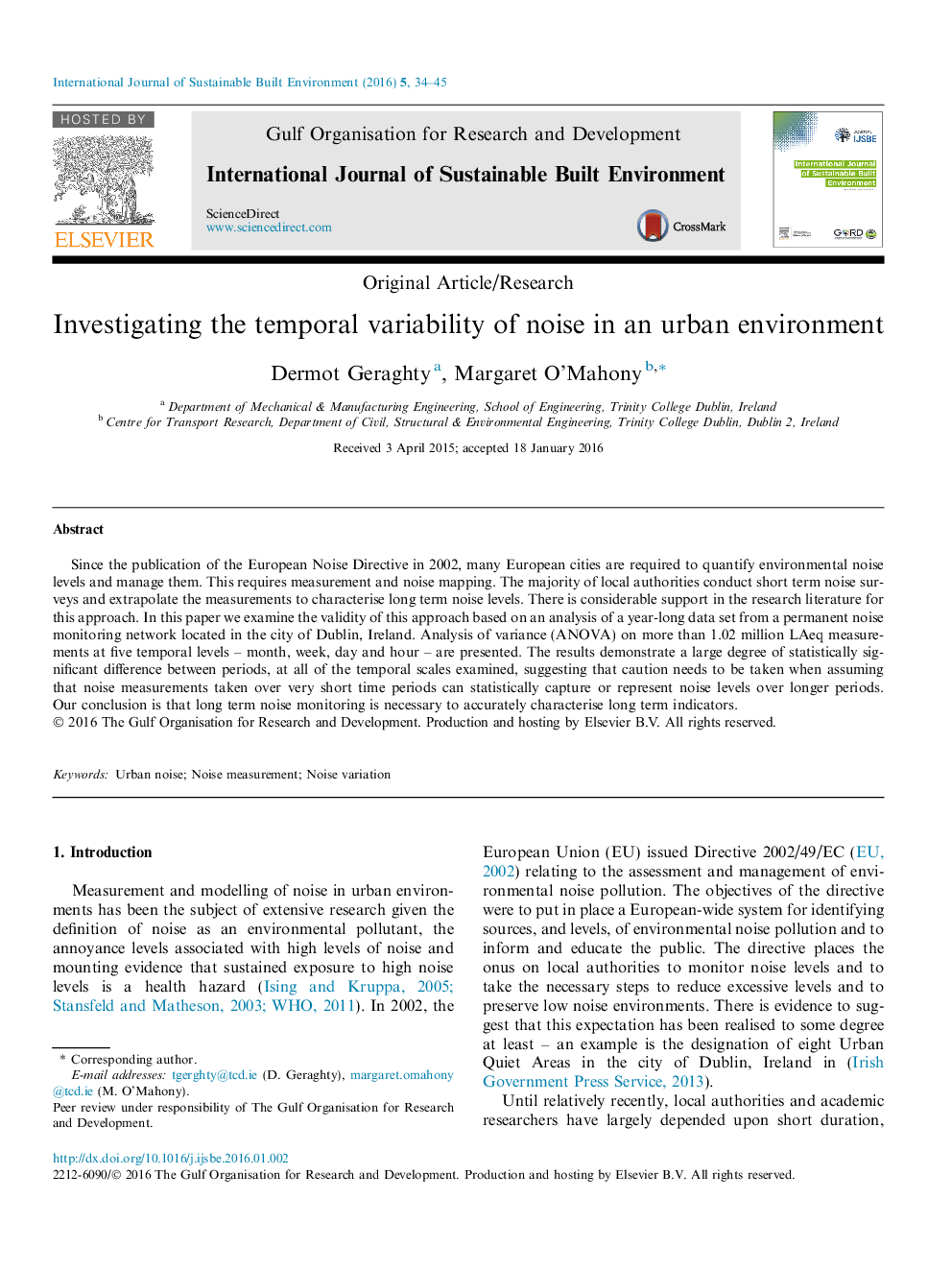| Article ID | Journal | Published Year | Pages | File Type |
|---|---|---|---|---|
| 214742 | International Journal of Sustainable Built Environment | 2016 | 12 Pages |
Since the publication of the European Noise Directive in 2002, many European cities are required to quantify environmental noise levels and manage them. This requires measurement and noise mapping. The majority of local authorities conduct short term noise surveys and extrapolate the measurements to characterise long term noise levels. There is considerable support in the research literature for this approach. In this paper we examine the validity of this approach based on an analysis of a year-long data set from a permanent noise monitoring network located in the city of Dublin, Ireland. Analysis of variance (ANOVA) on more than 1.02 million LAeq measurements at five temporal levels – month, week, day and hour – are presented. The results demonstrate a large degree of statistically significant difference between periods, at all of the temporal scales examined, suggesting that caution needs to be taken when assuming that noise measurements taken over very short time periods can statistically capture or represent noise levels over longer periods. Our conclusion is that long term noise monitoring is necessary to accurately characterise long term indicators.
